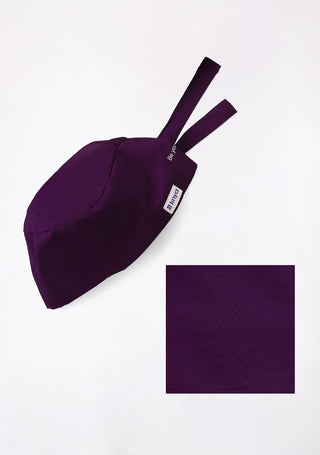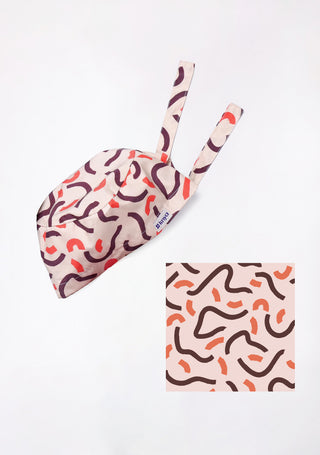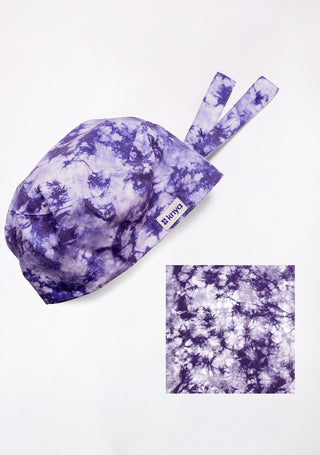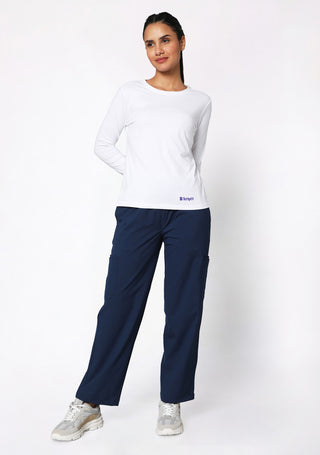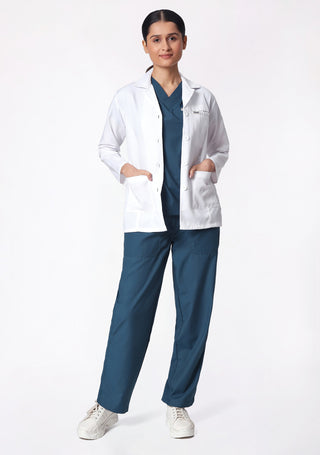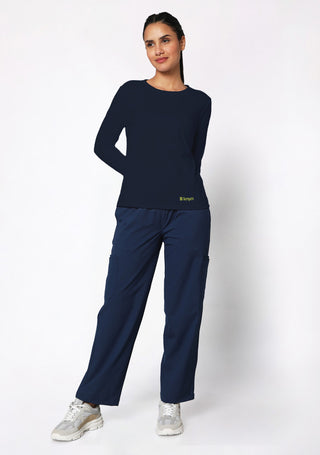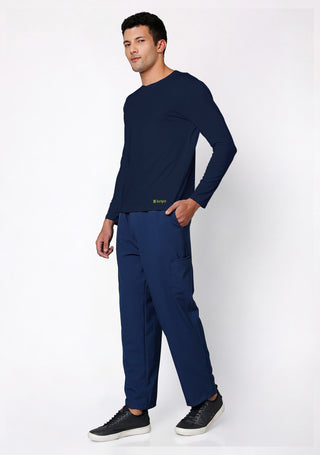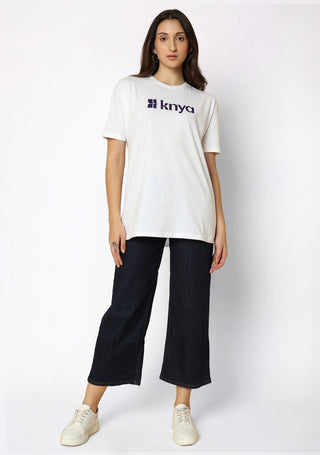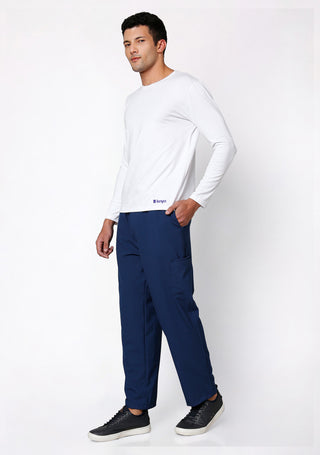Nurses are the backbone of the healthcare system, and their uniforms are more than just clothing—they are a symbol of professionalism, functionality, and comfort. Over the years, nurse uniforms have evolved significantly, reflecting changes in healthcare practices, patient care needs, and even fashion trends. While scrubs have long been the go-to choice for nurses, there is now a wide variety of options available, from traditional dresses to modern scrubs in various colors, fabrics, and designs.
In this blog, we will explore the different types of nurse uniforms available, their benefits, and how to choose the right one for your role and personal comfort. Whether you're a nurse, healthcare professional, or someone curious about the evolution of nursing attire, this guide will give you an in-depth look at nurse uniforms and their growing variety.
Check out Navy Blue Scrubs for Mens
The Traditional Nurse Dress: A Classic Look
Nurse dresses, which were once the standard uniform for nurses, still hold a place in healthcare settings today. The traditional nurse dress typically consists of a knee-length or ankle-length dress, often with a high collar and short sleeves. These dresses were initially made from cotton or linen fabrics, offering comfort and breathability during long shifts. While the style has evolved over time, many nurses still wear dresses in hospitals, especially in settings that prefer a more formal, professional look.
Though less common than scrubs, nurse dresses are often favored for their classic appearance and the level of professionalism they convey. Hospitals that cater to specific patient demographics, such as older adults or those with chronic illnesses, may still use nurse dresses to maintain a sense of tradition and authority. However, these dresses are often made from modern materials that offer flexibility and ease of movement, making them more comfortable and practical for today’s busy nursing environment.
Scrubs: The Modern Standard
Over the last few decades, scrubs have become the most common uniform for nurses. Scrubs are easy to wear, come in a wide variety of colors and designs, and are made from durable, comfortable fabrics like polyester and cotton blends. The adoption of scrubs in healthcare settings has been a game-changer in terms of comfort, functionality, and hygiene. Scrubs are designed to be loose-fitting and easy to move in, offering flexibility for nurses who spend their shifts on their feet, lifting patients, and attending to various tasks.
One of the biggest advantages of scrubs is their ease of care. They are machine washable, resist stains, and dry quickly, making them perfect for fast-paced hospital environments. Additionally, the synthetic fabrics used in scrubs have moisture-wicking properties, helping to keep nurses cool and dry during long shifts. For healthcare facilities looking to maintain a clean, professional appearance, scrubs are an ideal choice. Scrubs are also available in a wide range of colors, sizes, and designs, offering nurses plenty of options to suit their personal style or workplace requirements.
The Rise of Lab Coats
Another popular option for nurses and healthcare professionals is the lab coat. While lab coats were originally worn by doctors and medical researchers, they are now increasingly worn by nurses in certain roles, particularly those involved in patient assessment or research. Lab coats offer an added layer of professionalism and can be paired with scrubs or dresses for a more polished look. They are typically knee-length or longer and feature practical pockets for carrying medical tools, pens, and patient information.
Nurses who work in specialties like pediatrics or family medicine may prefer lab coats for their added functionality and authority. Lab coats are also an excellent choice for nurses who need a more formal look for meetings or patient consultations. Made from durable fabrics such as polyester or a cotton blend, lab coats are easy to clean, comfortable to wear, and provide ample storage space.
Find the best white lab coat here
Maternity Scrubs: Tailored for Comfort
Nurses who are expecting a baby don’t have to sacrifice comfort for style. Maternity scrubs are designed to provide additional room in the belly area and are made from soft, stretchy fabrics to accommodate a growing baby bump. These scrubs offer the same functionality and comfort as regular scrubs but are tailored to fit the unique needs of pregnant nurses.
Maternity scrubs often come with adjustable waistbands or side panels, ensuring that they can be worn throughout pregnancy. They are available in various styles and colors, just like regular scrubs, and can even be personalized with embroidery or logos for a more professional look. Maternity scrubs are especially useful for nurses who want to maintain their professional appearance and comfort during their pregnancy without needing to invest in a completely new wardrobe.
Stylish Nurse Tunics and Tops
For nurses looking for a more modern or fashionable look, stylish tunics and tops have become a popular alternative to traditional scrubs. Nurse tunics often feature elegant details such as flattering cuts, decorative stitching, and unique fabric patterns. While they still maintain the functionality of scrubs, tunics and tops are designed to offer a more polished and stylish appearance, making them suitable for healthcare settings where nurses are expected to dress professionally.
Many healthcare providers are adopting nurse tunics and tops as part of their uniform policy, especially in environments where patient interaction is frequent, and a polished appearance is essential. These stylish options allow nurses to express their personality while still adhering to the professionalism required in the healthcare environment.
Choosing the Right Fabric for Nurse Uniforms
The fabric of your nurse uniform plays a crucial role in ensuring comfort and durability. While cotton was once the fabric of choice for nurses, synthetic fabrics like polyester and blends such as polyester-cotton are now more commonly used. These materials offer benefits such as moisture-wicking, wrinkle resistance, and enhanced durability, making them ideal for the demanding nature of healthcare environments.
Polyester blends tend to be stain-resistant, ensuring that nurses can maintain a professional appearance throughout their shifts. Additionally, these fabrics dry quickly and are less prone to shrinking or fading, which can be a concern with cotton. For nurses working long hours in fast-paced settings, the right fabric can make a significant difference in comfort, functionality, and overall job satisfaction.
The Future of Nurse Uniforms
As healthcare continues to evolve, so too will nurse uniforms. Innovations in fabric technology, such as antimicrobial and moisture-wicking properties, are likely to play a major role in the future of nurse uniforms. These advancements will help nurses maintain comfort and hygiene while working long shifts, ensuring that they remain focused on patient care rather than being distracted by their clothing.
Moreover, as more nurses work in specialized fields, we can expect to see an even greater variety of uniforms. From scrubs designed for specific medical specialties to uniforms that incorporate new technologies, the future of nurse uniforms is bright. Personalization will also continue to be a key trend, with nurses having more opportunities to express their individuality through their work attire.

